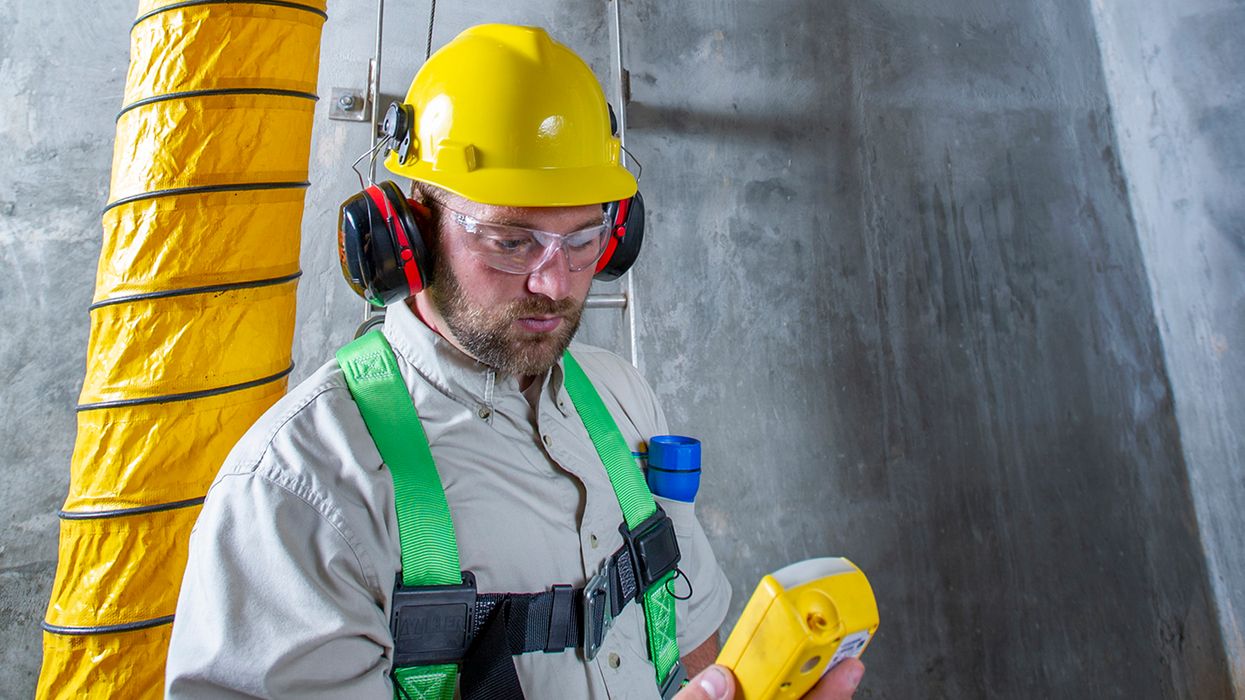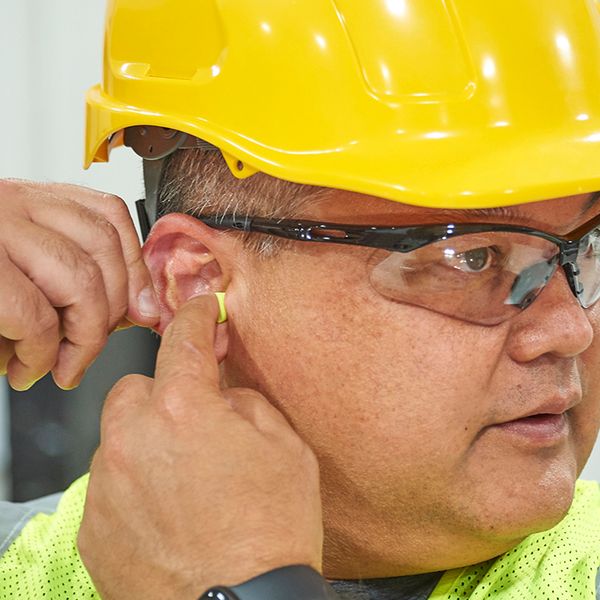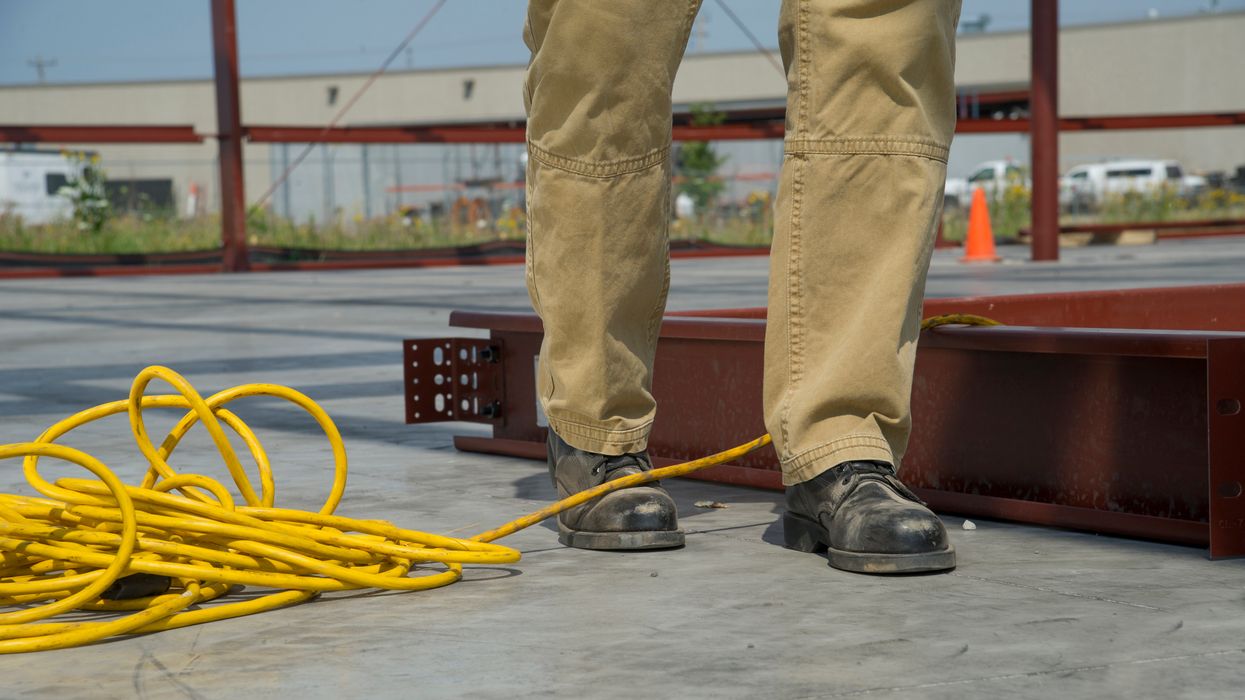Can you hear me? Hazardous noise in the workplace
Approximately 22 million workers are impacted by hazardous noise in the workplace each year. About 1 in 8 of the working population has hearing difficulty. Among those, occupational exposures are the cause for 1 in 4. Noise exposure in the workplace can lead to hearing loss and tinnitus (ringing in the ears), and affected workers are more likely to get injured on the job.
We tend to think of hearing loss as something that affects only our ears, but there are other health impacts. It’s associated with cognitive decline and heart problems. Hearing loss and tinnitus can also impact mental health, which may lead to anxiety, depression, and feelings of isolation and sadness.
I sat down for a chat about hearing loss with my colleague Cindy Pauley. In addition to her role as an editor on our Environmental, Health, and Safety (EHS) team, Cindy is also a Certified Occupational Safety Specialist (COSS) and a Certified Occupational Hearing Conservationist (COHC).
| For more information about hearing conservation, see our ezExplanation. |
Editor: Cindy, I know you’re passionate about hearing. Tell me a little more about that.
Cindy: Other than a deep adoration of how the human body heals itself, my passion comes from spending time with people, which I know sounds a bit vague. But bear with me. My dad worked as a heavy equipment operator. He ran everything from dozers and front-end loaders to quarry trucks. Now, fast forward to my days as a 911 dispatcher. My coworkers (and friends) were police officers, firefighters, and paramedics. What did they all have in common? The word “what.”
That’s right - almost every time I said something to them, they would respond with “what?” You can imagine how frustrating this was not just for me, but for them. I could sense their frustration at having to ask for a repeat of information or feeling excluded from conversations because they didn’t want to ask people to repeat themselves. Eventually, I could see them become more introverted and depressed. I didn’t want that for them, so I became passionate about hearing protection.
My message is two-fold: 1) that hearing loss is permanent and 2) unhealthy noise is everywhere. Attached to nerve cells in the cochlea of the ear are thousands of tiny hairs that help turn sound vibrations into electrical signals. The electrical signals are transmitted to the brain which turns these signals into sound. Once these delicate hairs are damaged, they don’t grow back. What people don’t recognize is how simple things we do each day are damaging to these hairs.
Let’s take my dad and 911 friends as examples. My dad operated heavy equipment without hearing protection most of the time (this was before hearing protection became a workplace focus). Similarly, my 911 friends were exposed to emergency sirens that averaged 120–130 decibels. Exposure at these levels without hearing protection, even for a brief period, caused permanent hearing damage.
To make matters worse, they didn’t wear hearing protection off the job either. They continued to expose themselves to other forms of unhealthy noise such as lawnmowing, attending concerts, and operating recreational vehicles. The most surprising, however, is one most people never think of — driving with windows down. My dad and each of my friends all had greater hearing loss in their left ears, next to the window that was down. Studies have found that regardless of speed or vehicle model, when the windows are down, the driver is exposed to a nearly constant 89 decibels of noise. For my 911 friends, add the 120-130 decibels from the siren coming through the same window and it’s no wonder they struggle to hear.
I hope workers take the message off-the-job and use hearing protection. Essentially, if they have to raise their voice to speak to someone while performing an activity, their hearing needs protection!
Who needs a hearing conservation program?
Editor: Statistics from fiscal year 2022 show that OSHA cited 1910.95 – Occupational noise exposure - 268 times. The regulation requires employers to implement a hearing conservation program when employees’ noise exposure equals or exceeds 85 decibels over an 8-hour time-weighted average (TWA). Cindy, what do you think may be behind employers’ lack of a hearing conservation program?
Cindy: My belief, which comes from experience as a Safety Manager in various industries, is that employers struggle with compliance because they don’t understand the requirements of the standard. It throws a lot of numbers and calculations at people, which can be confusing. Unfortunately, this confusion can lead to avoidance. Additionally, I think employers believe that the process of performing audiometric tests; finding licensed or certified audiologists, otolaryngologists, or other physicians; and identifying and managing potential standard threshold shifts (STS) will be complicated and expensive. However, there are so many resources available to assist employers, and I encourage them to use those resources.
Key to remember: Hearing loss is permanent – and preventable. Workplace noise monitoring can help employers determine whether a hearing conservation program must be implemented.


















































